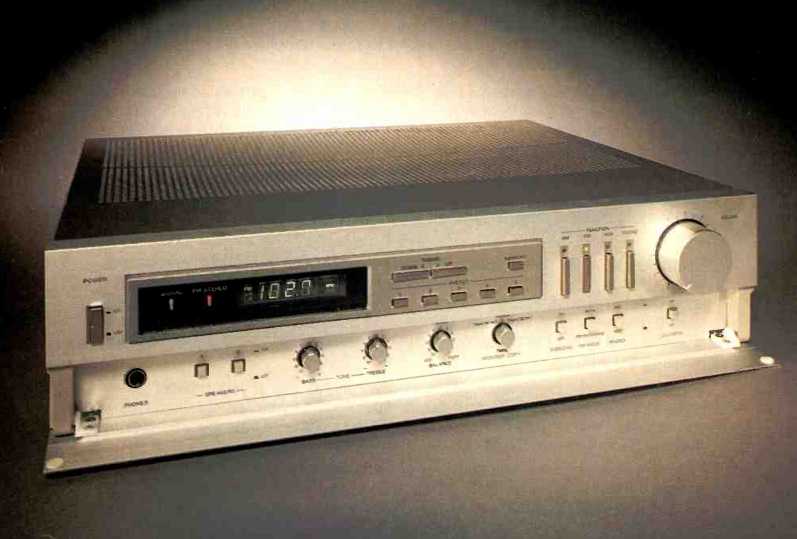
Manufacturer's Specifications
FM Tuner Section:
Usable Mono Sensitivity: 10.3 dBf.
S/N Ratio: Mono, 75 dB; stereo, 72 dB.
THD at 1 kHz: Mono, 0.1%; stereo, 0.2%.
Capture Ratio: 1.2 dB.
Image Rejection: 45 dB.
AM Suppression: 60 dB.
Stereo Separation, 1 kHz: 50 dB.
Frequency Response: 10 Hz to 15 kHz, +0.2,-1.5 dB.
AM Tuner Section:
Usable Sensitivity: 15 dBµ.
S/N Ratio: 55 dB.
Amplifier Section:
Power Output: 40 watts per channel, 8 ohms, 20 Hz to 20 kHz (50 watts, 1 kHz, 4 ohms).
THD: 0.02%, 8 ohms.
Damping Factor: 80, 1 kHz, 8 ohms.
Input Sensitivity: MM phono, 2.5 mV;
MC phono, 0.25 mV; high level, 150 mV.
Maximum Phono Input Level: MM phono, 200 mV; MC phono, 20 mV.
Frequency Response: Phono, RIAA ±0.5 dB; high level, 20 Hz to 20 kHz, ±0.5 dB.
S/N Ratio: MM phono, 80 dB; MC phono, 62 dB; high level, 96 dB.
Tone Control Range: ± 10 dB at 50 Hz and 10 kHz.
Subsonic Filter Cutoff: 18 Hz, 6 dB per octave.
General Specifications:
Power Consumption: 130 watts.
Dimensions: 17.1 in. (43.4 cm) W x 4.4 in. (11.2 cm) H x 16.1 in. (40.8 cm) D.
Weight: 19.8 lbs. (9.0 kg).
Price: $399.95.
Company Address: 61 Law Dr., Fairfield, N.J. 07006.
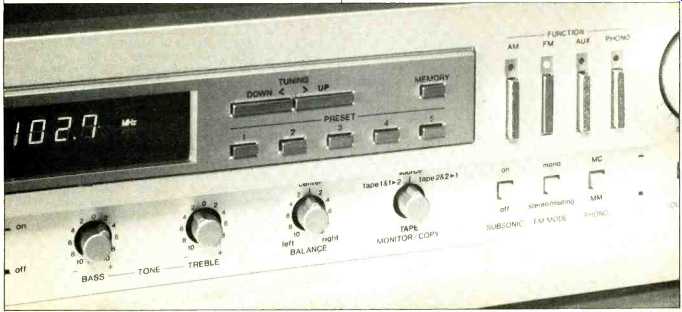
As so often happens with advances in audio technology, new features are first incorporated in top-of-the-line separate components which are beyond the reach of all but the most affluent of audio enthusiasts. Later on, these features filter down to high-powered, high-priced all-in-one receiv ers, where a larger audience is potentially available. Finally, they are incorporated into relatively low-cost, medium-powered receivers that just about anyone interested in good sound can afford. The Denon DRA-400 is a good example of a receiver which has benefited from technology first found in higher priced units.
This receiver employs crystal-controlled, frequency-synthesized tuning for accuracy and has a five-station preset capability with battery-operated memory backup. Not only does the phono preamplifier section incorporate both moving-magnet and moving-coil inputs (the latter at an input impedance of 100 ohms), but the phono preamp-equalizer section has a direct-coupled input. The power amplifier section employs a non-switching biasing circuit for the elimination of so-called switching and notch distortion at the output stages. These refinements would have been found only on more expensive components just a few years ago.
The front panel of the Denon DRA-400 is neatly divided into highly functional upper and lower sections. The upper section contains the power on/off switch, a numeric display of station frequency, a stereo indicator light, a signal-strength LED indicator, up and down tuning buttons, the five preset buttons and their "memory" switch, program selector pushbuttons, and a large, rotary master-volume control. The signal-strength indicator takes the form of a "go-no-go" indicator, rather than a signal-strength meter: It lights when the incoming signal strength is deemed "adequate" and does not light when weaker signals are received-an interesting approach but not very useful.
Controls in the lower section are normally covered by a swing-down hinged door, since they are used less frequently than those just described. Behind the door panel are a stereo headphone jack; a pair of speaker selector buttons; bass, treble and balance controls; a three-position monitor/ copy switch; a subsonic filter switch; a stereo/mono switch (associated with FM reception); an MM/MC phono switch, and a loudness on/off switch.
The rear panel of the DRA-400 is equipped with the usual 75- and 300-ohm FM antenna terminals, phono and high level input terminals, two pairs of tape in/out jacks, two pairs of color-coded speaker connection terminals, a chassis ground terminal, and a pair of a.c. convenience outlets (one switched, one unswitched). Instead of the usual AM loop stick antenna, a more elaborate, true AM loop antenna is packed with the receiver as a separate item; its two leads must be connected to the appropriate AM and ground terminals on the back of the set. The pivotable loop antenna is best snapped into an antenna holder during receiver installation so the antenna can still be rotated for best AM reception. Since this loop antenna forms part of the input-stage tuned circuit, the owner's manual suggests that even if an outdoor AM antenna is used (because of inadequate signal strength), the loop antenna's leads should remain connected to their appropriate terminals, in parallel with the outdoor antenna leads.
Tuner Measurements
Usable mono FM sensitivity fell short of published claims, measuring 16 dBf (3.47 µV across 300 ohms). In stereo, sensitivity was limited by muting and stereo thresholds, which were set to 32 dBf (21.9 µV). For 50-dB quieting in mono, an input signal strength of 19.5 dBf (5.2 µV) was required; for stereo, a signal strength of 42 dBf (69.2 µV) was needed. Plots of quieting and distortion (at 1 kHz) versus signal strength are shown in Fig. 1. Signal-to-noise in mono, at 65 dBf of input signal, measured 75 dB as claimed; in stereo it was 72 dB, also exactly as claimed.
Harmonic distortion in mono measured 0.17% for a 1-kHz signal, modulating the r.f. carrier by 100%. Total harmonic distortion actually decreased to 0.085% in stereo for the same signal and modulation levels. Distortion in mono and stereo for other audio modulating frequencies is shown in Fig. 2. Although measured distortion was low at high frequencies in stereo and mono, I must point out that these figures were obtained using a bandpass filter with a steep roll-off above 15 kHz (the highest broadcast program frequency). Without the filter, subcarrier products were only some 42 dB below 100% modulation levels.
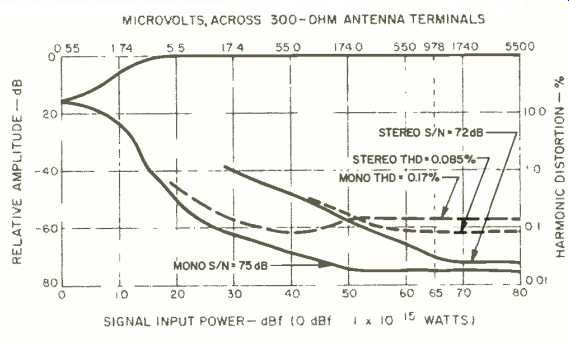
Fig. 1--FM quieting and distortion, mono and stereo.

Fig. 2--Distortion vs. frequency for stereo and mono FM.
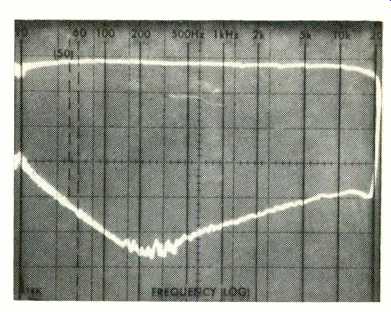
Fig. 3--FM frequency response and separation vs. frequency.
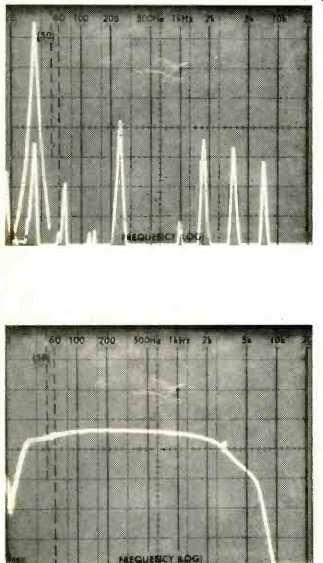
Fig. 4--Stereo FM crosstalk for 5-kHz modulation.
Fig. 5--AM tuner frequency response.
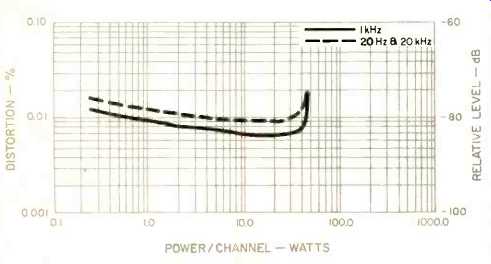
Fig. 6--Power output vs. distortion, 8 ohms.
Figure 3 is a multiple frequency versus amplitude plot, using a spectrum analyzer swept over a frequency range from 20 Hz to 20 kHz. The upper trace represents modulated channel frequency response, which was down some 1.5 dB at 15 kHz. The lower trace represents output from the unmodulated channel output, or stereo FM separation. At 1 kHz I measured a very high stereo separation of 59 dB. At 100 Hz, separation was 44 dB, and at 10 kHz it was still a very acceptable 35 dB.
Figure 4 is another spectrum analyzer dual plot. This time, frequencies are linearly displayed from 0 Hz at the left to 50 kHz at the right. The tall spike at the left represents a 5-kHz output from the modulated channel. Contained "within" this spike is the lower amplitude output (5 kHz) from the unmodulated channel, while to the right are various distortion and subcarrier output products observed at this output. The tallest spike in this second trace (about a third of the way across the screen) is the inordinately high level of 19-kHz subcarrier output mentioned earlier. Capture ratio for this tuner section measured 1.4 dB, close to the 1.2 dB claimed; image rejection and AM suppression measured 48 dB and 61 dB respectively, both somewhat better than claimed. Alternate-channel selectivity measured 60 dB.
AM frequency response, though not outstanding, was better than that normally encountered on medium- or even high-priced stereo receivers. A plot of AM response is shown in Fig. 5, and if you are willing to apply a tolerance of ±6 dB, you could say that it extends out to nearly 5 kHz.
Amplifier Measurements
The power amplifier section of the Denon DRA-400 delivered 46.5 watts of power per channel into 8-ohm loads over a frequency bandwidth of 20 Hz to 20 kHz, with no more than its rated 0.02% total harmonic distortion. Distortion as a function of power output is shown in Fig. 6. At the rated output of 40 watts per channel, THD measured 0.0075% for mid-frequency signals, 0.015% at 20 Hz, and 0.017% at 20 kHz. The SMPTE IM at rated output measured 0.019%, CCIF twin-tone IM at rated output was 0.0041%, while IHF IM was a rather high 0.6%. The IHF twin-tone IM figure was calculated from the spectrum analyzer display of Fig. 7. The two tall spikes represent 9- and 10-kHz signals at amplitudes equivalent to full rated output. Spurious components on either side are the IM signals generated by this twin-tone test.
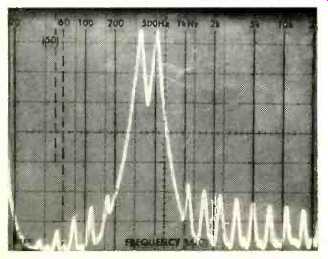
Fig. 7--IHF-IM analysis at rated output, with 9- and 10-kHz twin-tone test signal.
Vertical sensitivity is, as in all the spectrum analyzer displays of this report, 10 dB per vertical division and sweep was linear from 0 Hz to 20 kHz. Dynamic headroom for the amplifier was a rather high 1.9 dB, suggesting that short term music-signal peaks as high as 62 watts could be reproduced without severe clipping.

Fig. 8--Tone control range.
Figure 8 is a plot of the range of the bass and treble controls of the Denon DRA-400. Phono input sensitivity was 0.36 mV for the MM inputs (referred to 1-watt output at the speaker terminals), 0.036 mV for the MC phono inputs, and 23 mV for the high-level inputs. Phono signal-to-noise measured 80 dB for the MM inputs (referred to 5-mV input and 1-watt output) and 70 dB for the MC input (referred to 0.5-mV input and 1-watt output). High level S/N measured 80 dB referred to 0.5-V input, 1-watt output. At minimum volume settings, hum and noise was 82 dB below the 1-watt reference output. Volume-control tracking accuracy was within 2.0 dB to -50 dB below maximum setting.
RIAA equalization was extremely accurate above 1 kHz, deviating by no more than 0.1 dB out to 20 kHz. Measured from input to speaker outputs, there was a slight boost of about 0.9 dB at all frequencies below about 60 Hz, which was introduced not so much by the phono preamp stage as by the high-level amplification stages and/or tone control circuits (in their flat positions) which follow the phono stage.
Interestingly, when the subsonic filter was activated, it offset this slight boost at the offending frequencies in addition to performing its steep roll-off function below 20 Hz.
Use and Listening Tests
The Denon DRA-400 receiver sounds best when it is played at listening levels below its full rated output level, thereby avoiding some of the IM distortion generated by complex musical signals at higher levels. In my location, FM reception was quite satisfactory, and the usual number of stereo stations was received with low background-noise levels. I tried making some cassette recordings of FM stereo broadcasts and, as I suspected, the presence of high levels of subcarrier output products required that I activate an MPX filter on the cassette recorder. I would recommend that anyone using the receiver for this purpose do likewise.
Phonograph record reproduction was very good, and the MC inputs did provide enough gain so that they could be used even with low-level MC pickups. There was enough overload capability such that newer, higher output MC cartridges didn't run into any problems either.
While the Denon DRA-400 lacks some of the circuit sophistication and feature refinements of more expensive, higher powered receivers and separates, it is capable of reproducing program sources well enough to qualify as the central component of a modestly priced, but good-quality stereo component system. At its price, one could not ask for much more.
-Leonard Feldman
(adapted from: Audio magazine, Feb. 1993)
Also see: